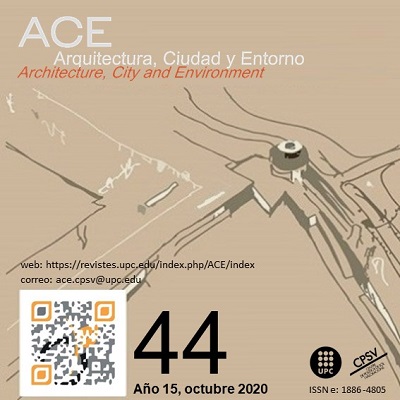An old downtown, for new uses? Spatial distribution of knowledge-intensive services [KIS] in the Concepción Metropolitan Area [AMC], Chile
DOI:
https://doi.org/10.5821/ace.15.44.9210Keywords:
Intermediate metropolis, downtown, tertiary services and locationAbstract
In the context of the interest that middle cities are taking in the search for more balanced urban systems (Diez & Amilozzi, 2015), the research had as its main objective to discuss and relativize the a priori applicability of predominant academic consensus on metropolization, polynucleation, and outsourcing, analysis, and understanding of intermediate urban systems. In order to characterize the recent trends in location and spatial distribution of tertiary services in general, and Knowledge-Intensive Service (KIS) in particular, for the Metropolitan Area of Concepción (AMC), Chile, a database was created with the commercial patents issued by the municipalities. For 5 years (2012–2016), this for each commune that makes up the metropolis. Subsequently, the bases were filtered, standardizing the local categories to the international ones (Glossary: Knowledge-Intensive Service), information that was georeferenced with the Arcgis 10.2 software, analyzing, contrasting, and interpreting its results. Finally, it is concluded that neither the commercial sub-centralities nor the industrial peripheries have been relevant factors in explaining the distribution of KISs in the AMC, with the downtown being the one that best explains their locations, concentrations, and expansions. The main finding identified a change in the functional axis of the central core of the AMC, historically formed by the Concepción and Talcahuano, to a new central axis formed by Concepción and the San Pedro de la Paz, accounting for an emerging restructuring, guided by the proximity, environmental and landscape attributes of this last commune.
Downloads
Published
Issue
Section
License
| INTELECTUAL PROTECTION CRITERIA |
At this moment, it is count with the "Oficina Española de Patentes y Marcas", while global protection it is being processed by the World Intelectual Property Organization (OMPI/WIPO). Nevertheless the International Standard Serial Number Office (ISSN) has given the following numbers ISSN: 1886-4805 (electronic version) and 1887-7052 (paper version). All articles will be peer reviewed, using double blind reviewing. |
| COPYRIGHT |
The article contents and their comments are authors exclusive liability, and do not reflect necessarily the journal editor commitee's opinion. All ACE published works are subject to the following licence CC BY-NC-ND 3.0 ES http://creativecommons.org/licenses/by-nc-nd/3.0/es/ It implies that authors do not hold nor retain the copyright without restrictions but only those included in the licence. |





































